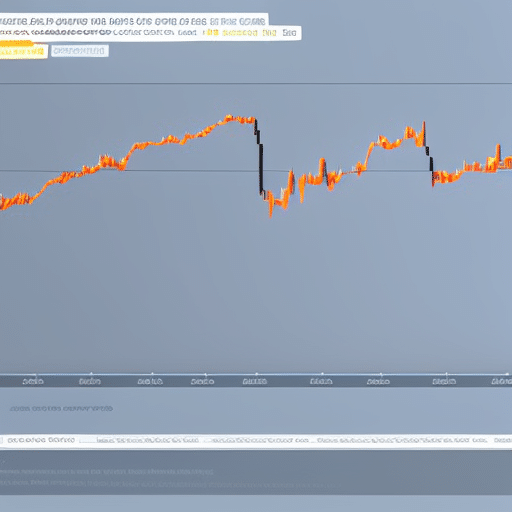Xrp Role In Finance
XRP is a digital asset designed specifically for use in the financial sector. It has garnered increasing attention from investors and financial institutions due to its potential to revolutionize cross-border payments, increase efficiency, and reduce transaction costs. XRP enables these benefits by enabling near-instantaneous transfers of value between any two parties with no middleman needed. This article will explore the role of XRP in finance, including its benefits, major players in the ecosystem, current applications, potential future applications, risks associated with it, and the regulatory landscape.
Overview of XRP
XRP is a digital asset with the potential to revolutionize global finance by providing ultra-fast, low cost payments and remittances. XRP has become increasingly popular due to its usage as a medium of exchange for different types of assets and services. It is also used to provide liquidity solutions for financial institutions that are looking to manage their cash flow more efficiently. XRP is an open source protocol that enables users to quickly transfer money across borders without incurring steep transaction fees. As such, it has the potential to reduce friction in cross border payments and remittances. Additionally, XRP can be used as a bridge currency between different fiat currencies, helping alleviate liquidity issues in certain markets. This makes XRP an attractive option for businesses and organizations looking to optimize their finances on a global scale. By taking advantage of XRP’s unique capabilities, these entities can expect faster payments processing times and lower costs associated with international transactions. With this in mind, it is clear that XRP has the potential to play an important role in the future of global finance. In the next section we will explore some of the benefits that come with using XRP in finance applications.
Benefits of XRP in Finance
Utilizing blockchain technology, the cryptocurrency XRP can offer certain advantages to the financial sector. The most prominent of these is its ability to facilitate fast payments in a cost-effective manner. In comparison to traditional payment methods, which typically require multiple days for transactions to complete and incur large fees, XRP transactions are settled in a matter of seconds and only incur minimal fees. This offers tremendous benefit for businesses who need access to cash quickly without incurring unnecessary costs.
In addition to fast payments and cost savings, XRP is also able to provide increased visibility into transaction status and reduce counterparty risk due to its immutable ledger system. This allows users of the network greater assurance that their funds will reach their intended destination securely as well as peace of mind knowing that all relevant information regarding their transfers is publicly available on the blockchain. By providing these benefits, XRP has become an increasingly attractive option for many financial institutions looking for a more efficient way of transferring money across borders or settling securities trades. As such, it is clear that XRP has a great potential role within finance moving forward. With this in mind, it is now important to consider the major players in the XRP ecosystem.
Major Players in the XRP Ecosystem
As the potential of XRP becomes increasingly apparent in the financial sector, it is important to consider who the major players are in its ecosystem. Ripple, the company behind XRP, has a vision of creating an “Internet of Value” by allowing money to move as quickly and easily as information moves on the internet today. To facilitate this, they have created a suite of products including xCurrent, xRapid and xVia which leverage Ripple’s distributed ledger technology (DLT) and XRP token use for cross-border payments.|
The other major players involved in XRP are banks and financial institutions that are using Ripple’s technology to make faster payments globally with lower costs. Banks such as Santander, UBS and American Express have already adopted Ripple’s products while dozens more are currently testing out their solutions. Additionally, there are numerous cryptocurrency exchanges such as Coinbase and Binance which allow traders to purchase XRP tokens with fiat or other cryptocurrencies like Bitcoin. |
| Major Player | Role |
|---|---|
| Ripple | Develops DLT & Token Use |
| Banks | Adopting Products |
| Cryptocurrency Exchanges | Buy/Sell Tokens |
As these various parties participate in the XRP ecosystem, they can benefit from faster global payments at lower costs than traditional methods offer. With many current applications already being tested for real world scenarios, it’s no wonder that more players continue to join the space each day – paving the way for even greater innovation in finance moving forward.
Current Applications of XRP
The burgeoning field of blockchain technology has spurred a number of creative applications for XRP, opening the door to possibilities that were previously unimaginable in the financial industry. One such use is its ability to provide liquidity for cross-border payments. By leveraging its low transaction costs and fast settlement time, XRP can be used as an intermediary between two foreign currencies, allowing for faster and more efficient transfers than traditional methods. Additionally, XRP’s high scalability makes it ideal for use in large-scale transactions, making it possible to transfer funds quickly and securely across borders with minimal fees. Furthermore, its decentralized nature allows users to make secure payments without relying on banks or other third parties. This makes it an attractive option for businesses looking to streamline their payment processes. In sum, XRP provides a powerful solution for liquidity needs while facilitating quick and easy cross-border payments. As such, it is playing an increasingly important role in the finance industry today and holds potential for even greater applications in the future.
Potential Future Applications of XRP
With its scalability, low transaction costs and decentralized nature, XRP has the potential to revolutionize the way financial transactions are conducted around the world. It could be used for many different applications in finance, including:
- Instant Payments: XRP could be used to facilitate instantaneous payments across borders. This would reduce processing times from days or weeks down to seconds.
- Cross-Border Remittances: XRP could also be used for seamless international money transfers with near-instant settlements. This would allow users to send funds quickly and securely without needing multiple middlemen and incurring high fees.
- Smart Contracts: XRP could also enable smart contracts, allowing users to execute agreements programmatically without needing a third party intermediary. These applications have the potential to change the way global finance works by reducing costs and improving efficiency.
By leveraging its strengths, XRP offers numerous advantages that can benefit both individuals and businesses alike. However, there are certain risks associated with using it that must also considered before adoption on a large scale can occur.
Risks Associated with XRP
Utilizing XRP in financial transactions carries certain risks that must be taken into account. One of the main risks associated with investing in XRP is that it remains a highly speculative asset. Because its value is largely determined by market conditions, investors could either make substantial gains or suffer significant losses depending on the performance of the digital currency. Furthermore, there are security concerns related to using XRP for payments and investments due to its decentralized nature. Although this decentralization can offer increased security, it also means that users have less protection from fraud and malicious activities than they would when dealing with more traditional payment options. As such, careful consideration should always be taken before committing resources into any XRP-related venture. This transition leads us to examining the regulatory landscape surrounding XRP and its implications for those wishing to invest in it.
Regulatory Landscape
Given the decentralized nature of XRP, it is important to examine the regulatory landscape that surrounds the digital currency in order to understand its implications for investors. The legal framework surrounding XRP varies from country to country, and there are still a number of unresolved questions regarding how different countries will treat XRP as an investment. This lack of clarity has led some institutional investors to hesitate before investing in XRP. Despite this uncertainty, many governments have been supportive of cross border payments using XRP due to its speed and cost-effectiveness compared with traditional payment methods. In addition, a few countries have gone further by creating legislation that explicitly recognizes XRP as a legitimate form of payment or investment asset. For example, Japan’s Financial Services Agency officially recognized virtual currency exchanges in 2017 which allowed them to offer services involving trading cryptocurrencies such as XRP. As more governments recognize and regulate digital currencies like XRPs, institutional investors may become more comfortable investing their funds into this growing asset class.
Frequently Asked Questions
What is the difference between XRP and other cryptocurrencies?
Ripple technology and XRP adoption have been gaining attention lately, but what sets them apart from other cryptocurrencies? By exploring the differences between Ripple and its competitors, we can gain a better understanding of how it is used and adopted. Examining ripple’s unique features, such as fast transaction times and low costs, reveals why it has become so popular in the digital currency space.
What is the current market capitalization of XRP?
Currently, XRP’s market capitalization stands at around $14 billion USD. Ripple has had a significant impact on the cryptocurrency industry, helping to drive adoption of XRP amongst financial institutions and businesses worldwide.
How is XRP different than traditional banking systems?
XRP offers faster transaction speeds and cost efficiency compared to traditional banking systems. It eliminates the need for intermediaries, allowing transactions to be processed in a matter of seconds with minimal fees. XRP also provides greater security than traditional banking systems, which increases its attractiveness as an alternative for financial transactions.
What are the potential risks associated with investing in XRP?
Investing in XRP entails liquidity risk due to its small market cap and price volatility stemming from lack of regulation. Risk management strategies such as diversification are recommended for mitigating potential losses.
Is it possible to use XRP to pay for goods and services?
Adopting XRP for use in goods and services is gaining traction, with emerging use cases that demonstrate its potential. Increasingly, businesses are recognizing the advantages of accepting XRP payments – from cost savings to faster transactions. Analysts agree that the increased adoption of XRP will open up a myriad of possibilities for users worldwide.





 Bitcoin
Bitcoin  Ethereum
Ethereum  Tether
Tether  XRP
XRP  Solana
Solana  USDC
USDC  TRON
TRON  Dogecoin
Dogecoin  Lido Staked Ether
Lido Staked Ether  Cardano
Cardano  Wrapped Bitcoin
Wrapped Bitcoin  Hyperliquid
Hyperliquid  Bitcoin Cash
Bitcoin Cash  Wrapped stETH
Wrapped stETH  Sui
Sui  Chainlink
Chainlink  LEO Token
LEO Token  Avalanche
Avalanche  Stellar
Stellar  USDS
USDS  Toncoin
Toncoin  Shiba Inu
Shiba Inu  WETH
WETH  Litecoin
Litecoin  WhiteBIT Coin
WhiteBIT Coin  Wrapped eETH
Wrapped eETH  Hedera
Hedera  Binance Bridged USDT (BNB Smart Chain)
Binance Bridged USDT (BNB Smart Chain)  Monero
Monero  Ethena USDe
Ethena USDe  Bitget Token
Bitget Token  Polkadot
Polkadot  Coinbase Wrapped BTC
Coinbase Wrapped BTC  Uniswap
Uniswap  Aave
Aave  Pepe
Pepe  Pi Network
Pi Network  Dai
Dai  Ethena Staked USDe
Ethena Staked USDe  Aptos
Aptos  OKB
OKB  Bittensor
Bittensor  BlackRock USD Institutional Digital Liquidity Fund
BlackRock USD Institutional Digital Liquidity Fund  Jito Staked SOL
Jito Staked SOL  NEAR Protocol
NEAR Protocol  Internet Computer
Internet Computer  Cronos
Cronos  Ethereum Classic
Ethereum Classic  Ondo
Ondo